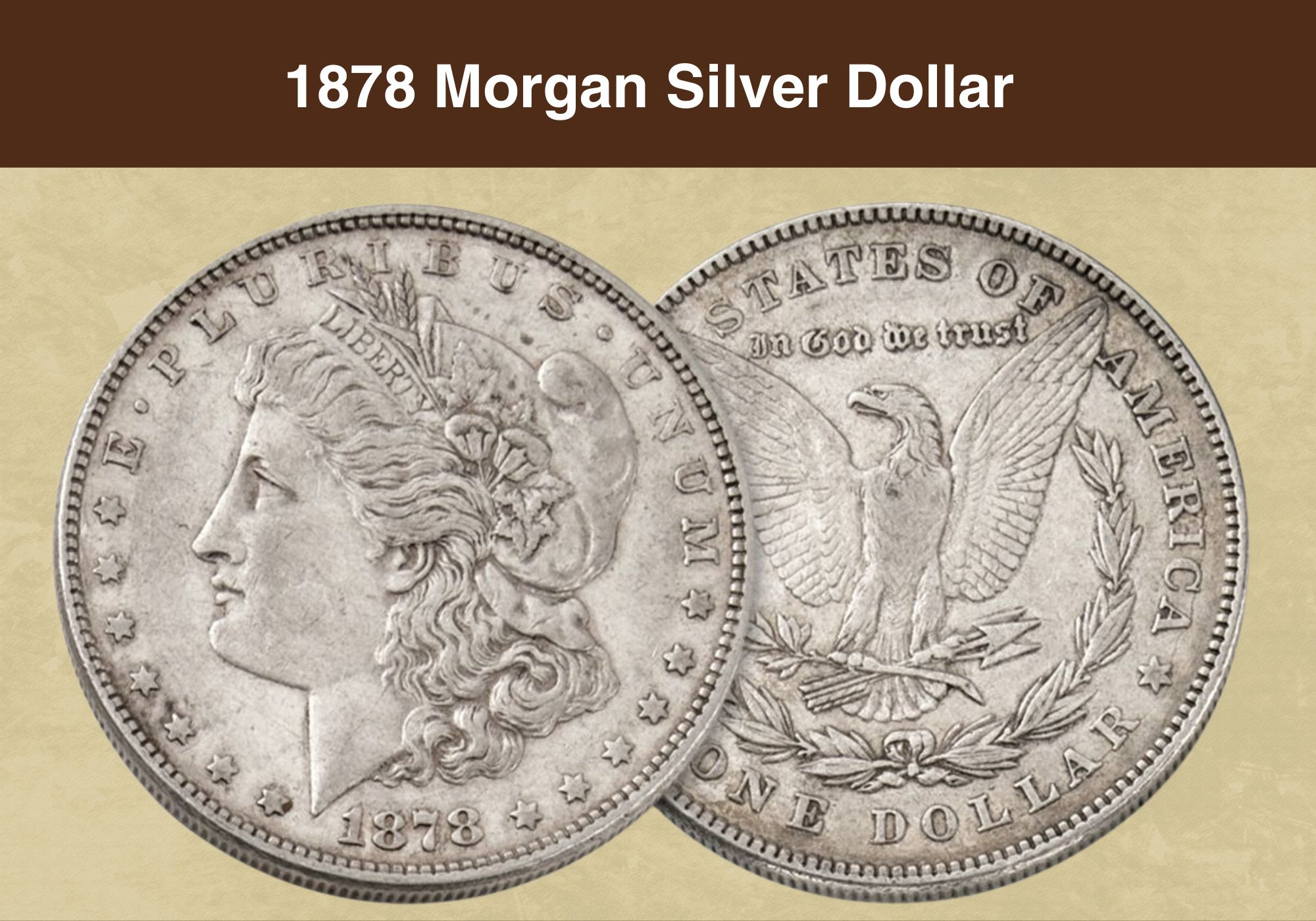
Coin Value Contents Table
- 1878 Silver Dollar Value Chart
- History of the 1878 Silver Dollar
- Features of the 1878 Silver Dollar
- 1878 Silver Dollar Grading
- 1878 Silver Dollar Value Guides
- 1878 No Mint Mark Silver Dollar Value (Seven Tail Feathers)
- 1878 No Mint Mark Silver Dollar Value (Eight Tail Feathers)
- 1878 S Silver Dollar Value
- 1878 CC Silver Dollar Value
- 1878 (P) No Mint Mark Proof Silver Dollar Value
- Rare 1878 Silver Dollar Error List
- Where to Sell Your 1878 Morgan dollar ?
- FAQs
Have you been lucky enough to find an 1878 silver dollar? If so, you’re probably wondering what it’s worth.
We’re going to explore the 1878 silver dollar value. And we’ll look at the different mint marks, variants, and error coins out there.
Ready to find out more? Let’s get started!
1878 Silver Dollar Value Chart |
||||
| Mint mark | XF45 | MS63 | MS65 | MS67 |
| 1878 (P) No Mint Mark 7 Tail Feathers, Reverse of 1878 Silver Dollar Value | $100 | $225
Prooflike: $400 Deep Mirror Prooflike: $900 |
$850
Prooflike: $2,600 Deep Mirror Prooflike: $6,500 |
$35,000 |
| 1878 (P) No Mint Mark 7 Tail Feathers, Reverse of 1879 Silver Dollar Value | $85 | $525
Prooflike: $650 Deep Mirror Prooflike: $1,400 |
$2,250
Prooflike: $4,750 Deep Mirror Prooflike: $19,500 |
$60,000 |
| 1878 (P) No Mint Mark 8 Tail Feathers Silver Dollar Value | $135 | $550
Prooflike: $675 Deep Mirror Prooflike: $1,750 |
$2,700
Prooflike: $6,750 Deep Mirror Prooflike: $23,500 |
$72,500 |
| 1878 S Silver Dollar Value | $62 | $165
Prooflike: $250 Deep Mirror Prooflike: $625 |
$425
Prooflike: $675 Deep Mirror Prooflike: $8,000 |
$9,250 |
| 1878 CC Silver Dollar Value | $325 | $700
Prooflike: $1,000 Deep Mirror Prooflike: $2,650 |
$2,400
Prooflike: $3,500 Deep Mirror Prooflike: $9,000 |
$72,500 |
| PR50 | PR60 | PR65 | PR67 | |
| 1878 (P) No Mint Mark Proof 7 Tail Feathers Silver Dollar Value | $2,250 | $3,250 | $25,000
Cameo: $47,500 |
$85,000 |
| 1878 (P) No Mint Mark Proof 8 Tail Feathers Silver Dollar Value | n/a | $2,350
Cameo: $3,250 |
$14,000
Cameo: $22,500 |
$55,000
Cameo: $90,000 |
| 1878 (P) No Mint Mark Proof 7 Tail Feathers with Reverse of 1879 Silver Dollar Value | n/a | $22,500 | n/a | n/a |
History of the 1878 Silver Dollar
The 1878 silver dollar was the first of the series known as the Morgan dollar. It took its name from the man who designed it, George T. Morgan, then Assistant Engraver at the US Mint.
It was produced against a backdrop of changes in the approach to silver coinage. Before the Morgan dollar, the Mint would turn any silver presented to it into coins on demand. But that stopped with the passage of the Coinage Act of 1873.
Before the Act, people could present silver to the Mint when metal prices were low. The coins it was turned into would then have a higher value than the silver they contained. That resulted in large numbers of silver coins flooding the market, leading to inflation.
The new Act was intended to solve that problem. But the mining industry was unhappy with the change and lobbied for a return to free coinage. The Bland-Allison Act of 1878 was effectively a compromise with the mining industry.
It required the Treasury to purchase between $2 million and $4 million worth of silver every month and convert it to coins. The silver would be bought at market price from US mines.
The first Morgan silver dollars were produced in March 1878, a week after the Bland-Allison Act had passed. The large number of coins required by the new law meant that the Mint facilities at Philadelphia, San Francisco and Carson City were all pressed into service.
The last coins from the original run of Morgan dollars were minted in 1921. They were resurrected for a single year in 2021.
Also read: 12 Most Valuable One-Dollar Coin Worth Money
Features of the 1878 Silver Dollar
The Obverse of the 1878 Silver Dollar
George Morgan’s design for the obverse of the 1878 dollar shows Lady Liberty. But rather than the traditional Grecian lady, his Liberty was based on an American model.
Anna Willess Williams was a philosopher and teacher. She sat for Morgan on five occasions, and he announced himself delighted with the results.
She, however, had a less pleasant experience. She had agreed to model for the coin on the condition that she remained anonymous – but her identity was soon leaked.
She became famous overnight, and had to contend with thousands of letters and visits. It’s been suggested that her engagement even came to an end as a result of the publicity.
The coin shows her in profile, with a headband inscribed with the word “LIBERTY”. The Latin motto “E PLURIBUS UNUM” arches above the image, while the date is at the bottom. Stars, representing the states, form a border at the sides of the coin.
The Reverse of the 1878 Silver Dollar
The reverse was also the work of Morgan. It shows an eagle with outstretched wings. One talon holds a fletch of arrows, while the other has a sprig of olive. A wreath frames the lower two thirds of the image.
The 1878 dollars include a number of different reverses. The first 750,000 to be struck at the Philadelphia Mint facility show the eagle with eight tail feathers. Later coins showed seven tail feathers.
The change brought the design in line with earlier coin images. These had always showed the eagle with an odd number of tail feathers.
Just above the bird’s head, the words “In God we trust” are written in Gothic script. The country name arches above that, following the line of the upper coin edge.
The denomination, written as “ONE DOLLAR”, curves to follow the lower coin edge. If the coin has a mint mark, it will be found just above the letters “D” and “O”.
Other Features of the 1878 Silver Dollar
While the 1878 dollar is commonly referred to as silver, it contains 10 per cent copper too. It measures 38.1 millimeters in diameter, and weighs 26.73 grams.
If you turn it on its side, you’ll see a number of grooves running perpendicular to the coin faces. These are known as “reeds”, and they’re a way of tackling fraud.
They were first used in the eighteenth century, when coins were usually made of precious metals. Coin clipping was a common practice, shaving slivers of metal from the edges and devaluing the coins. Reeded edges allowed anyone offered the coin to see instantly if this had happened.
This YouTube video from Silver Struck shows examples of 1878 dollars struck in Philadelphia, Carson City and San Francisco.
Also read: 14 Most Valuable Coins In Circulation
1878 Silver Dollar Grading
| # | Grade |
|---|---|
| 1 | Basal State-1 |
| 2 | Fair |
| 3 | Very Fair |
| 4, 5, 6 | Good |
| 7, 8, 10 | Very Good |
| 12, 15 | Fine |
| 20, 30 | Very Fine |
| 40 | Extremely Fine |
| 50 | About Uncirculated |
| 60 | Mint State |
| 65 | Mint State |
| 70 | Mint State |
Please check our grading guides to know your coin scale, It’s the necessary step to know the exact value of your coin.
Check out now: How to Grade Morgan Silver Dollar?
1878 Silver Dollar Value Guides
1878 No Mint Mark Silver Dollar Value (Seven Tail Feathers)
If your 1878 silver dollar doesn’t have a mint mark, it was struck in Philadelphia. The Mint facility there produced over 10.5 million Morgan dollars that year.
The vast majority of these – almost 9.8 million – were struck with a reverse showing the eagle with seven tail feathers. But even amongst seven-feathered coins, there are variations. Some have what’s known as the “reverse of 1878”, while a smaller number have the “reverse of 1879”.
You can tell the difference by looking at the eagle’s breast. If it’s flat on the right-hand side as the coin is viewed, it’s the reverse of 1878. If it’s rounded, it’s the reverse of 1879.
The value of an individual coin depends on which type of reverse it has, and its condition. Coin condition is graded from 1 to 70. A coin graded 1 has only enough detail visible to identify the mintage and denomination. A coin graded 70 is flawless.
An 1878 silver dollar with seven tail feathers and the 1878 reverse is worth between $40 and $50 in poor condition. (There’s a small premium for coins graded 1.) That rises to about $62 for coins graded 15, and $100 for those graded “extremely fine” (XF45).
Mint state coins – those that have never been circulated – are worth more. The independent coin graders the PCGS value a coin graded MS60 at $150, rising to $385 at MS64.
Prices rise steeply from there. An MS65 example is worth over $8500, and one at MS66 is worth $4,750. The auction record for a mint state coin was set for a coin graded MS66+ in 2018. That sold for $43,475.
Coins can also be designated “prooflike” or “deep mirror prooflike”, reflecting the quality of the strike. Prooflike coins are more valuable than standard mint state examples, and deep mirror prooflike coins (abbreviated to DMPL) are more valuable again.
While a mint state coin graded MS65 is worth $8500, that rises to $2,600 if it’s prooflike. A DMPL coin at the same grade is worth $6,500.
A coin graded 1 with the 1879 reverse will cost you around $55. Examples at other circulated grades are similar, or slightly less expensive, than the 1878 reverse.
But at AU55 and above, values for this variant are higher. The PCGS values an MS60 coin at $265, while the finest known example is graded MS67 and worth $60,000.
Prooflike examples range from $275 at MS60, through to $20,000 at MS66. And DMPLs range from $400 at MS60 to $31,500 at MS65+.
1878 No Mint Mark Silver Dollar Value (Eight Tail Feathers)
The earliest of the 1878 dollars struck in Philadelphia showed the eagle with eight tail feathers. The facility struck 749,500 of those coins.
Examples graded 1 carry a premium. The PCGS values them at $50, compared to between $45 and $80 for coins graded from 2 to 15.
Mint state examples start at $310 for a coin graded MS60, with gem condition examples starting at $2,700. The finest known eight-feather dollar is a single coin graded MS68, and worth a staggering $110,000.
The variant also includes a number of prooflike and deep mirror prooflike coins. The former start at $325 at MS60, rising to $10,000 for the four coins certified MS65+.
The lowest graded DMPL example is graded MS60 and valued at $675. The highest is a sole coin graded MS66 and valued at $52,500.
1878 S Silver Dollar Value
The San Francisco Mint facility struck 9,774,000 silver dollars in 1878. They can be identified by the small “S” on the reverse, above the denomination.
Examples graded 1 are valued at $65 and those graded 2 at $40. Values fall to $36 at 3, and remain in double figures all the way to mint state grades.
A standard MS60 dollar is valued at $90. That rises to $165 if it’s prooflike, and $190 for the DMPL equivalent.
The most valuable of the standard S mint mark dollars is a single coin graded MS68. That was last sold in 2009, fetching just under $36,000. Today, the PCGS values it at $47,500.
The top grade amongst prooflike examples is MS68 too. The two coins certified at that level are each worth around $57,500.
And for DMPLs, the top grade is MS66. The PCGS has certified three coins at that grade, valuing them at $27,500 apiece.
1878 CC Silver Dollar Value
The frontier location of the Carson City Mint facility presented significant logistical challenges. As a result, there are generally fewer coins with the “CC” mint mark, and they’re highly prized by collectors.
A little over 2.2 million dollars were struck there in 1878, with just 1,635 estimated to survive today.
Standard examples graded 1 are valued by the PCGS at $150, and prices rise steadily from there. A coin graded MS60 is worth around $525, rising to $2,400 for a gem MS65. The finest are graded MS67 and worth $72,500.
For prooflike coins, the PCGS offers values ranging from $575 at MS60 to $16,500 for MS66+.
A DMPL 1878 Carson City dollar graded MS60 is worth the same. But you’ll need to pay over $1,050 for a coin graded MS62. And the three DMPLs graded MS66 are each valued at $32,500.
1878 (P) No Mint Mark Proof Silver Dollar Value
Back in 1878, proof dollars were struck in small numbers at the Philadelphia Mint facility. And just as with the business strike dollars, there are three different variants amongst them.
The earliest proofs depicted the eagle with eight tail feathers. 500 of these coins were struck, and they included some cameos. (Cameos have an attractive contrast between glossy fields and frosting on the raised parts of the design.)
Standard proofs with eight tail feathers start at $1,600 at PR58. The finest survivor is a single coin graded PR67+, valued at $67,500.
Eight-feather cameos range from $3,250 at PR60 to $90,000 at PR67. One coin at PR67+ is valued by the PCGS at $120,000.
The seven-feather proofs include examples with the reverse of 1878 and the reverse of 1879.
The former range in value from $2,250 for standard PR50, to $110,000 at PR67+. The finest cameo is graded MS66+ and valued at $90,000.
Values for the 1879 reverse proofs start at $22,500 for a coin graded PR60. Quality tops out at PR64, with the two coins certified at that level each valued at $165,000. Only a handful of cameos exist. The finest, graded PRR64+, is valued at a breathtaking $250,000.
Also read: Top 10 Most Valuable Morgan Silver Dollar Worth Money
Rare 1878 Silver Dollar Error List
1878 (P) 7 Over 8 Silver Dollar, Weak
We’ve already seen that the Philadelphia 1878 silver dollar had different reverse designs. The variant with eight feathers on the eagle’s tail was noticed fairly quickly, and some consider it an error coin.
But there’s also a version where seven feathers appear over the original eight feathers on the reverse. And this has two variants too – strong and weak.
With the weak variant, it’s just possible to make out the central tail feathers of the original design – but they’re very faint.
A standard coin starts at around $50 for an example graded 3. That rises to $160 at MS60. And the finest known examples are graded MS66 and worth around $3,600.
There are prooflike and DMPL specimens too. The former range from $185 at MS60 to $5,250 at MS65+. DMPLs start at $375 at MS61 and rise to $7,000 at MS65.
1878 (P) 7 Over 8 Silver Dollar, Strong
With the strong variant of the 7 over 8 tail feather reverse, the central tail feathers of the original design are clearly visible.
You can get hold of one of these coins graded 3 for around $40. An extremely fine (XF45) example will be around $100. And mint state coins range from $260 at MS60 to $40,000 for two coins certified as MS66+.
Prooflike examples start at $275 at MS60, while the finest is a sole coin graded MS65+ and valued at $7,000.
The lowest grade awarded to a DMPL is MS60, worth about $500. The finest certified by the PCGS are six coins graded MS65, each valued at $16,500.
There are a range of different varieties and error coins among 1878 silver dollars. This YouTube video from Couch Collectibles takes you through many of them.
Where to Sell Your 1878 Morgan dollar ?
Now that you know the value of your coins, do you know where to sell those coins online easily? Don’t worry, I’ve compiled a list of these sites, including their introduction, pros, and cons.
Check out now: Best Places To Sell Coins Online (Pros & Cons)
FAQs
How much is an 1878 silver dollar worth today?
1878 silver dollars can be worth anything from around $40 to $250,000. The value depends on their condition, the variant, whether there’s an error, and the mint mark.
Coins in poorer condition will generally be worth around $40 to $60. For some mint marks, though, coins graded 1 carry a premium and can be worth over $100.
The finest coins are known as gem quality, and are graded at 65 or higher out of 70. Business strike coins that are very attractive are known as “prooflike” or “deep mirror prooflike” and are worth more. And especially appealing proof coins known as “cameos” carry a premium too.
Where is the mint mark on an 1878 silver Morgan dollar?
If your 1878 silver dollar was struck in San Francisco or Carson City, it will have a mint mark. San Francisco coins will be marked with an “S”, and Carson City coins with “CC”. Coins struck in Philadelphia don’t have a mint mark.
Look for the mark on the reverse (the “tails” side). If there is one, it will appear just above the letters “D” and “O” of the word “DOLLAR”.

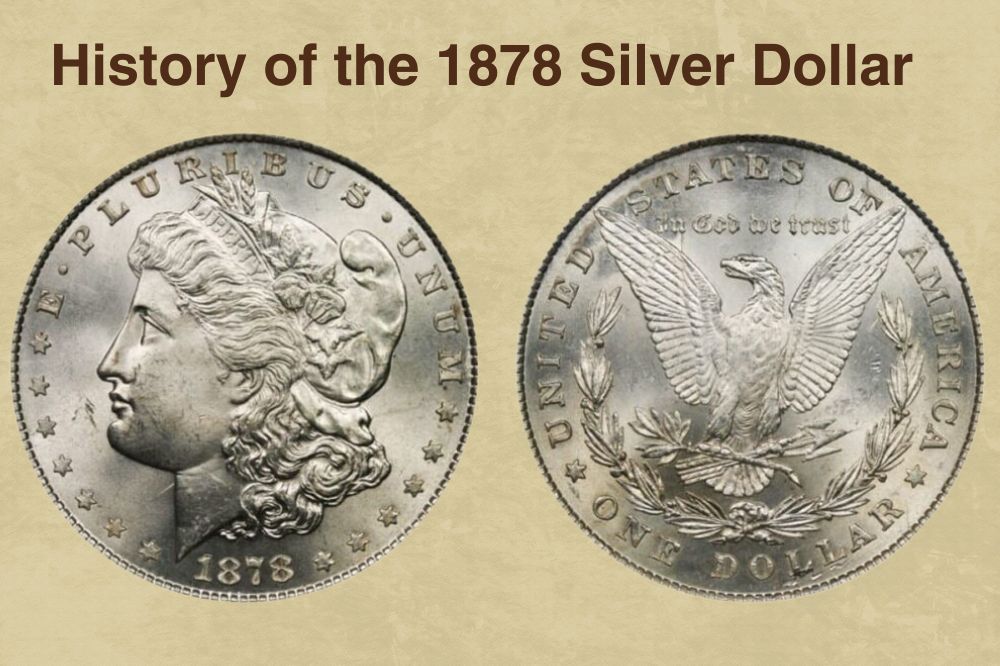
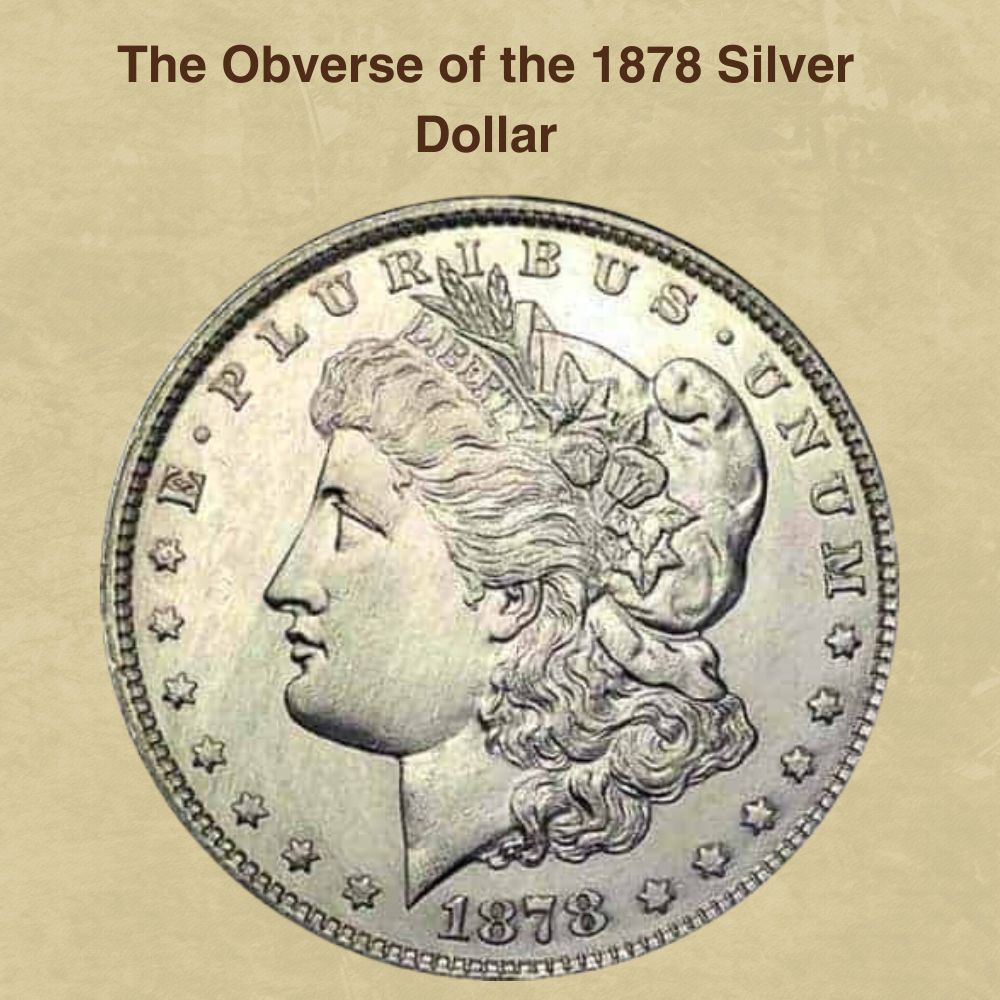
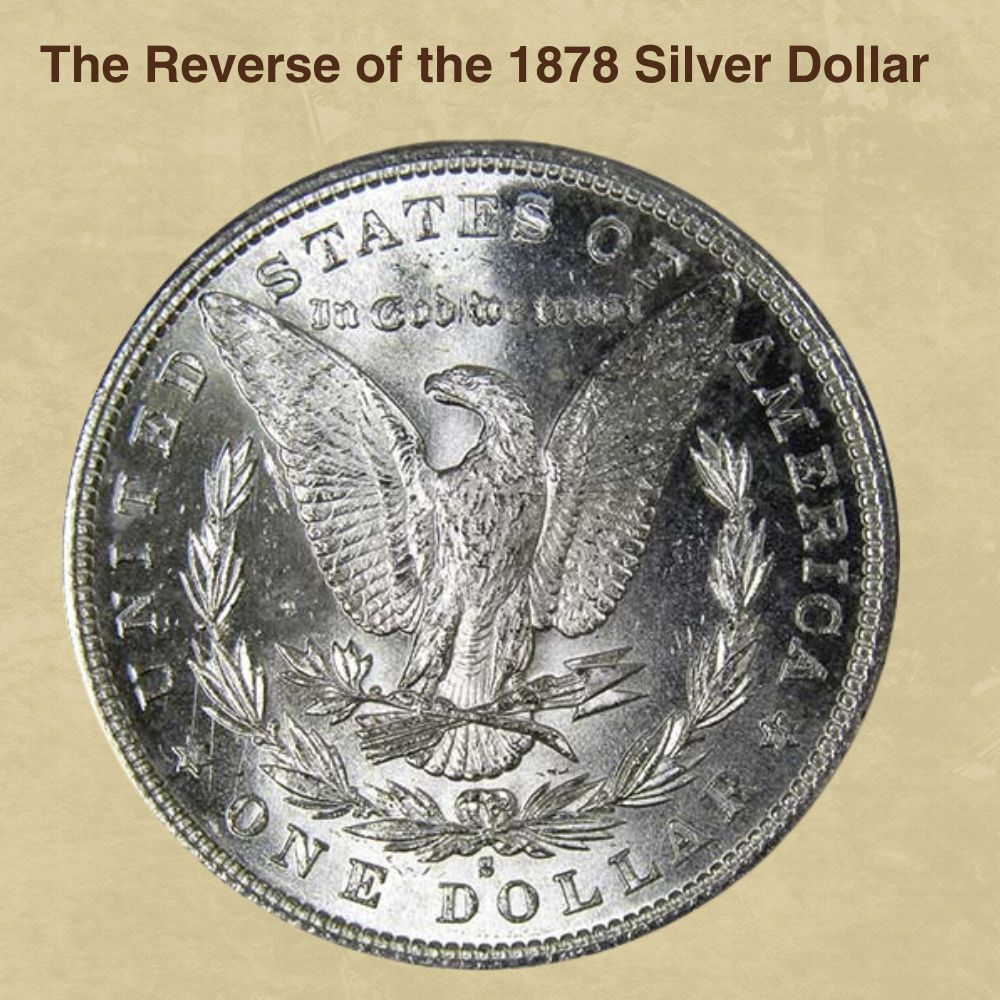
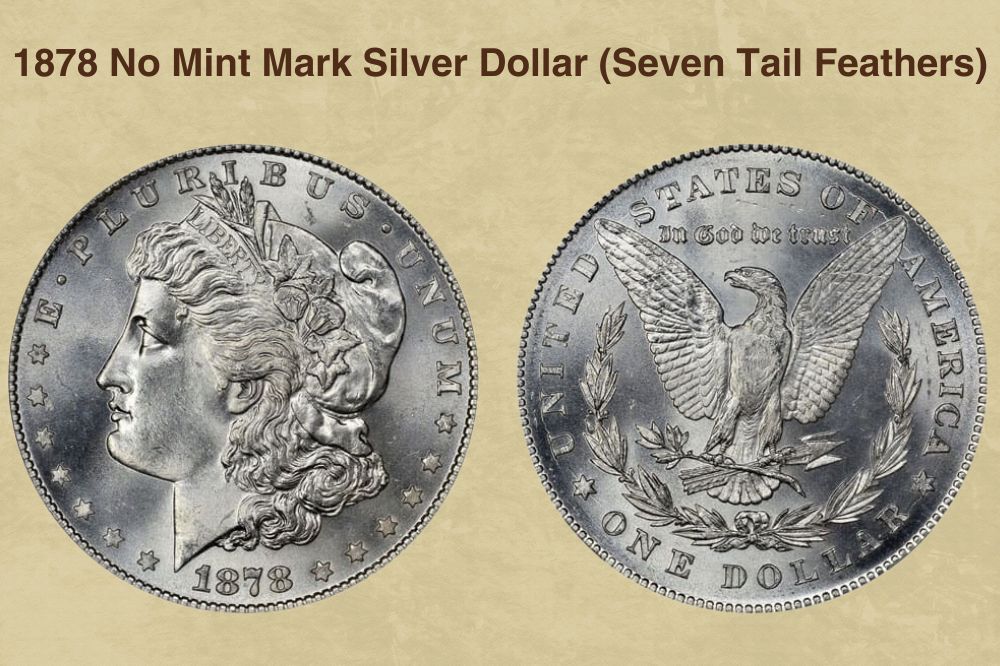
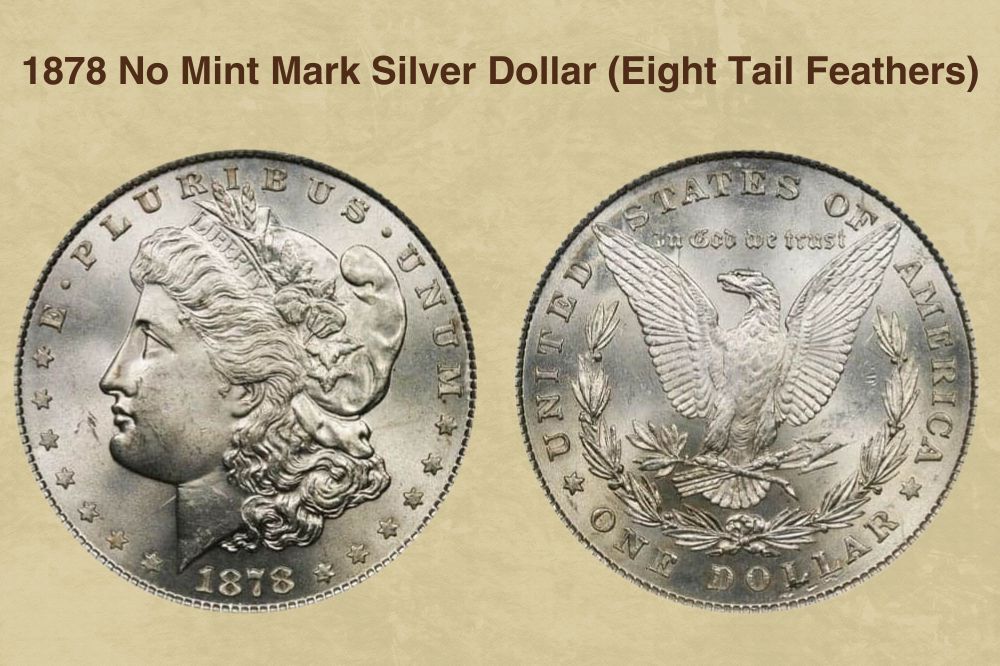
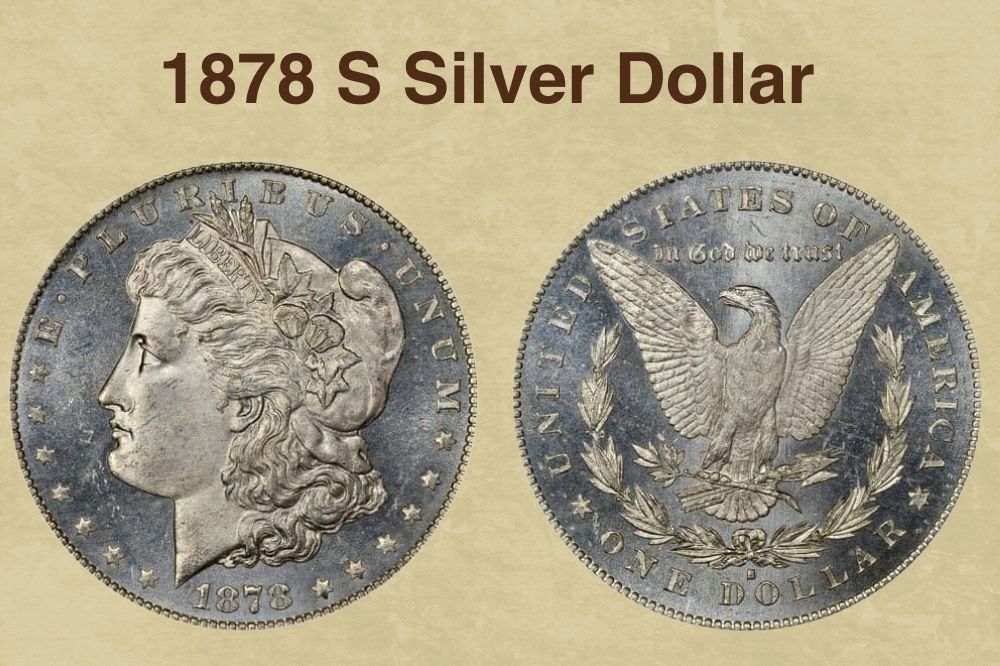
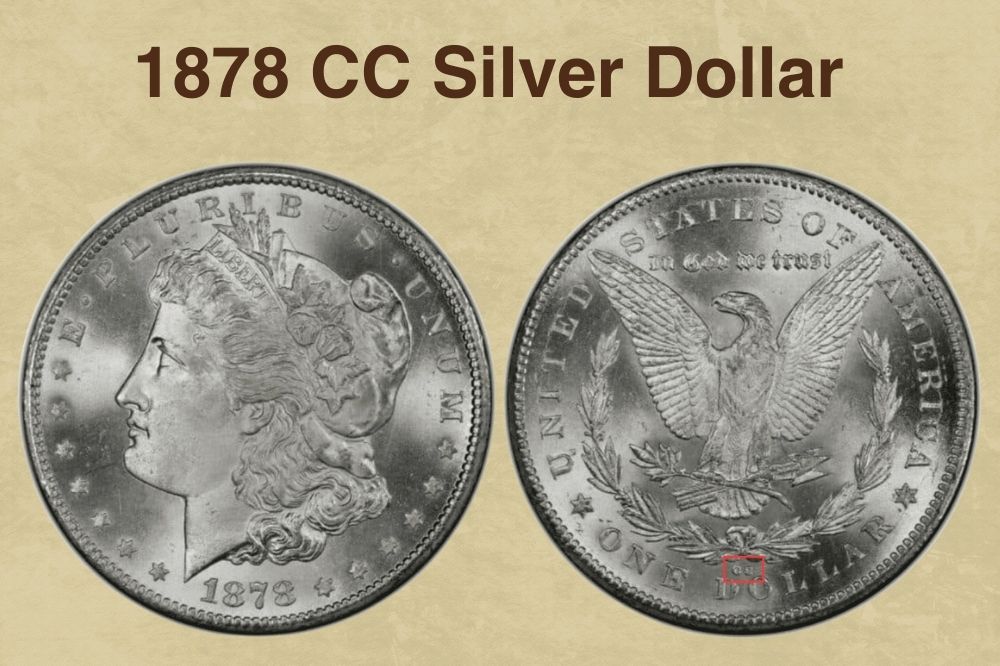
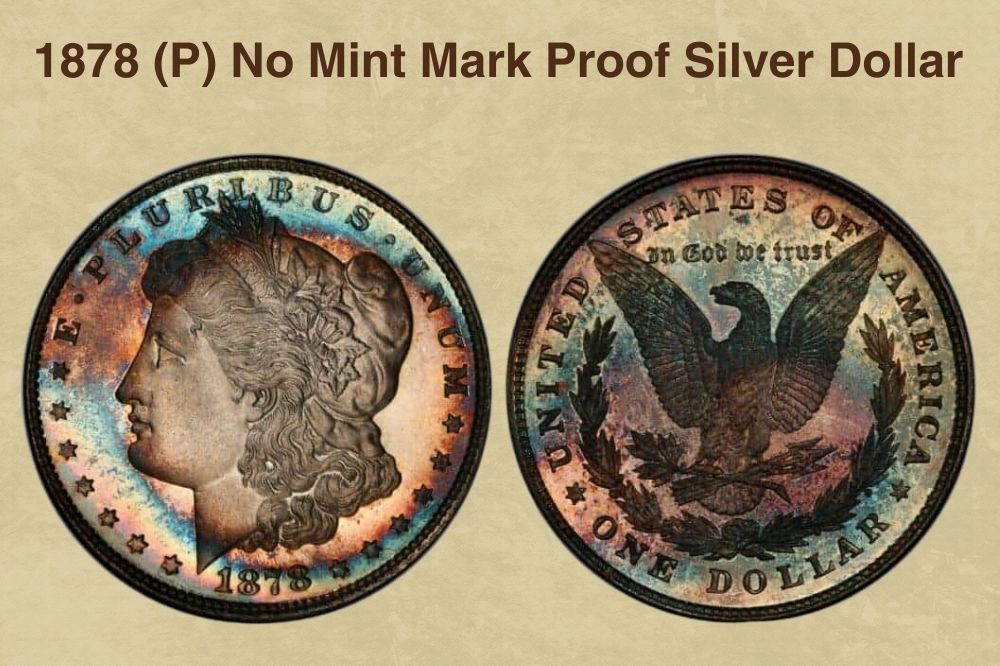
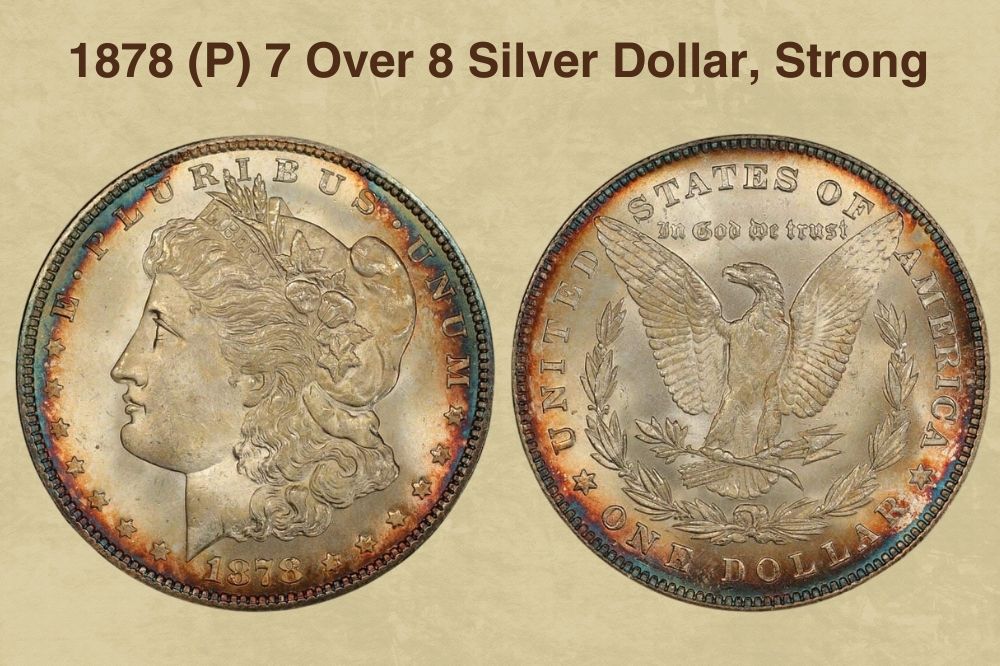
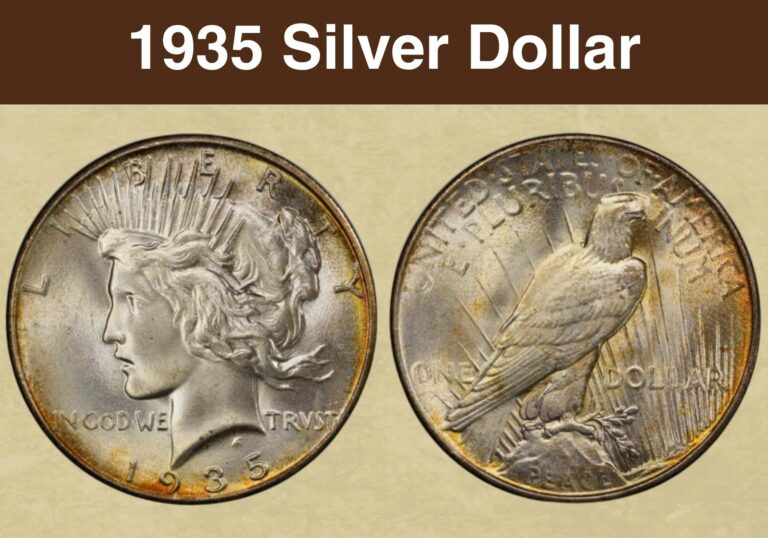
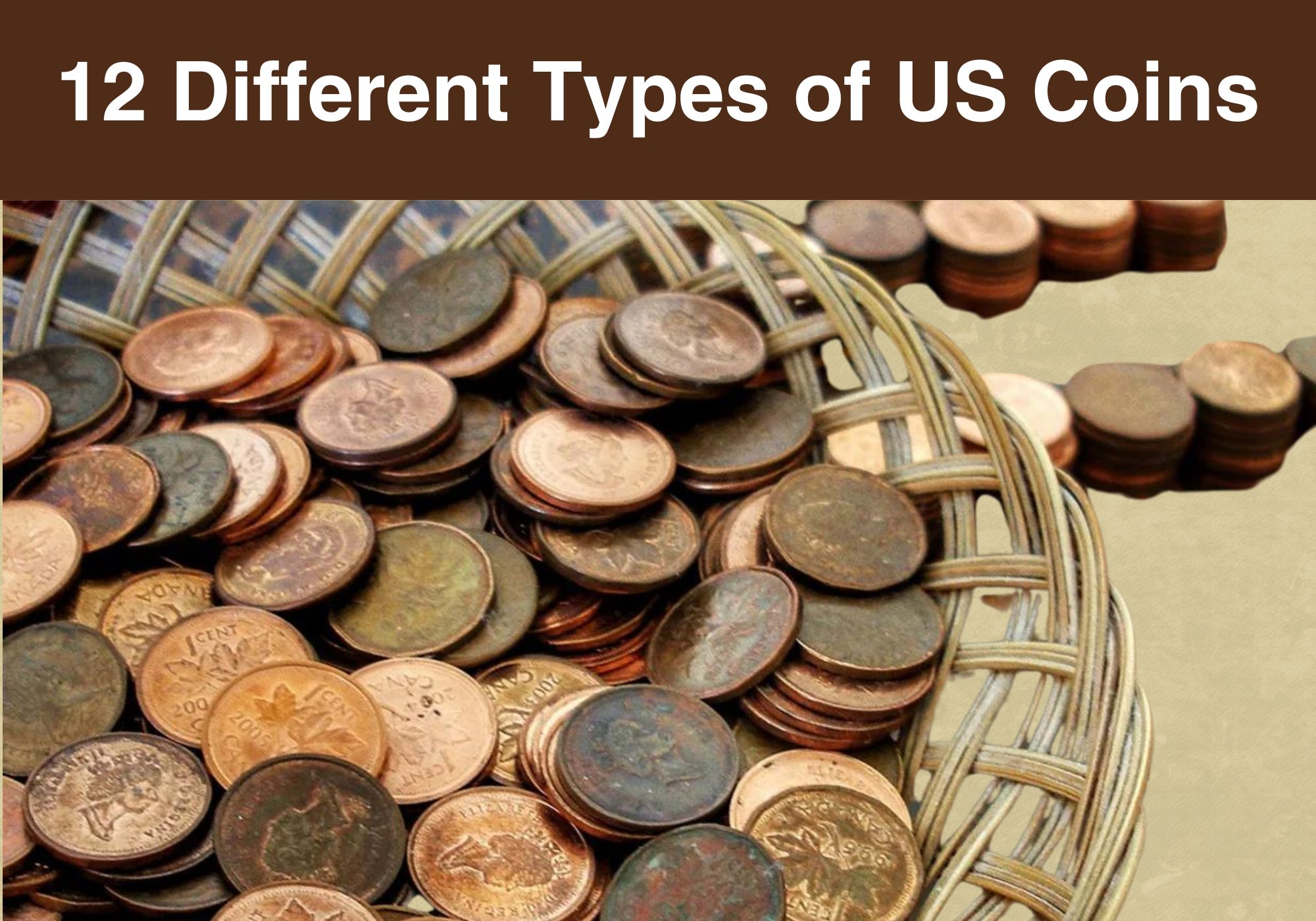
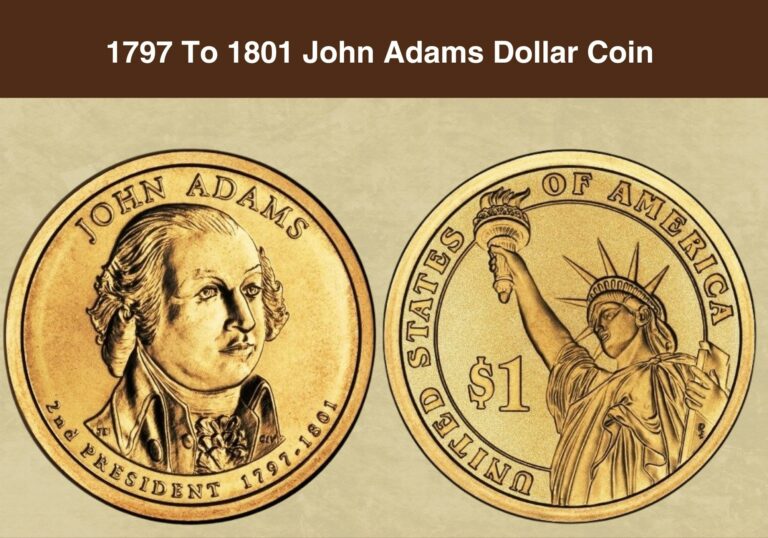
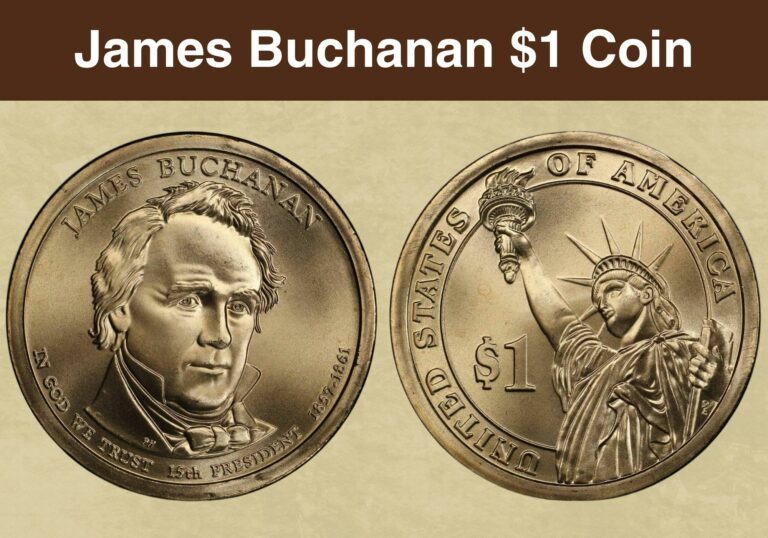
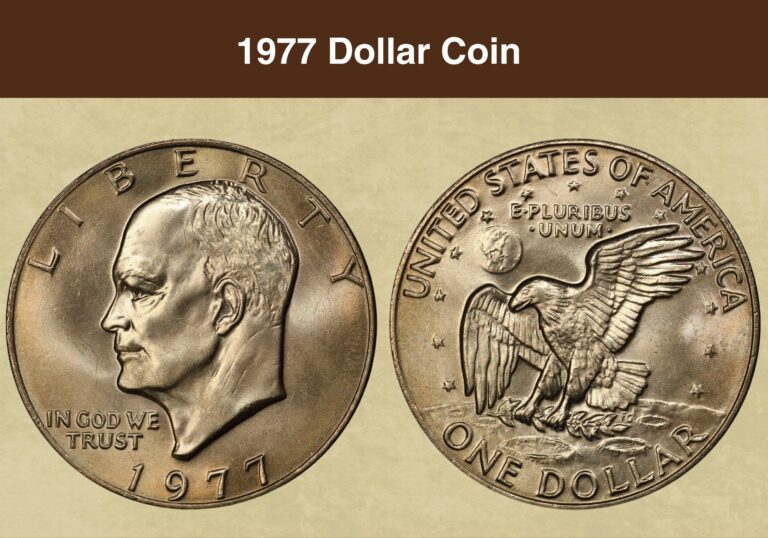
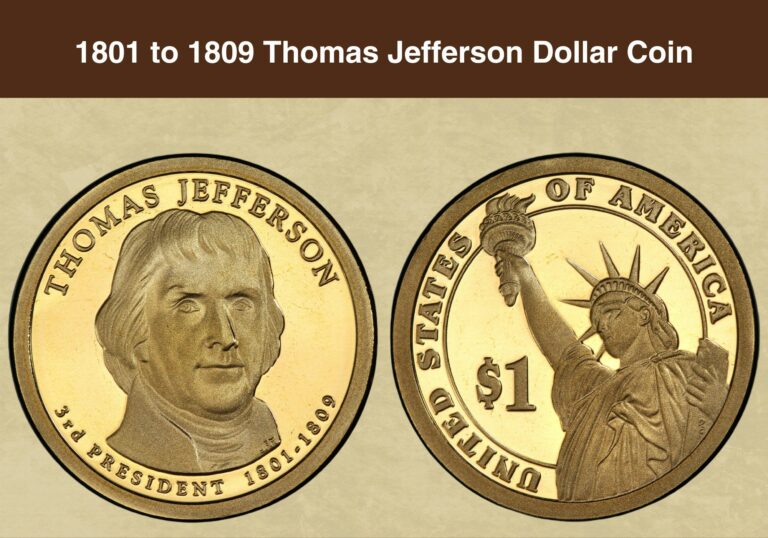
my silver dollar has no one dollar written under the eagle it is a 1878 coin